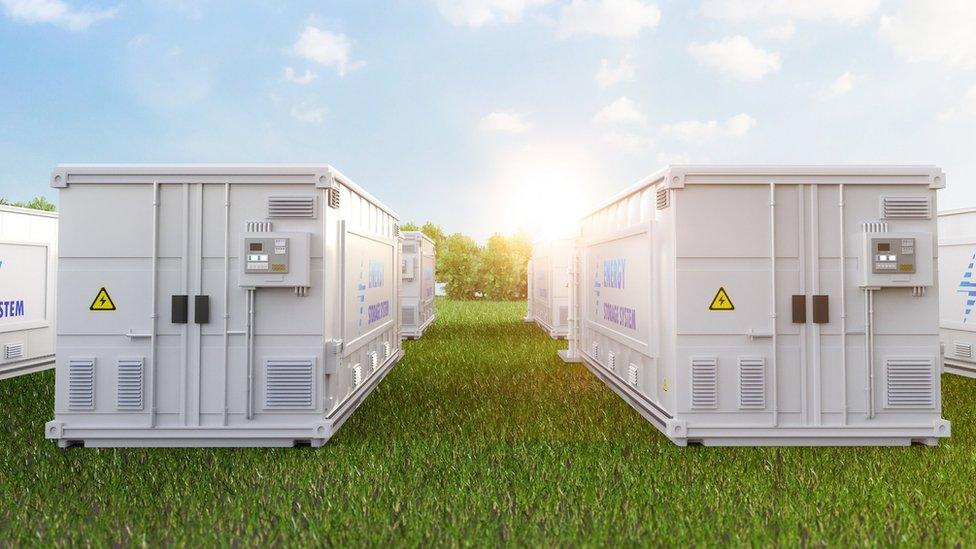Borders battery energy scheme passes planning hurdle
- Published

Up to 132 units could be built in the Borders as part of the plans
Plans for a huge Battery Energy Storage System (BESS) in the Borders have moved a step forward.
Scottish Borders Council has decided not to object to the proposals but has suggested a number of conditions should be imposed.
The final say on the proposals by Zenobe Energy near Eccles will lie with the Scottish government.
The scheme would see up to 132 large units installed to store power generated from renewables.
The units - which are about 37m (120ft) long, 16m (50ft) wide - would be located close to a sub-station in the area.
Developers Zenobe said that once commissioned it would be one of the biggest schemes of its kind in Europe, making a "significant contribution" towards meeting carbon reduction targets.
The development would not generate electricity but instead provides a location where it can be imported, stored and exported to meet the demands of the national grid network.
The Borders is home to a large number of wind farms and the site would be able to store energy for use when the turbines are not turning.
A report to councillors said it would result in some "minor landscape and visual impacts".
However, it concluded that it could help towards meeting national energy targets and a transition towards net zero.
Planning committee chairman Simon Mountford said it was "vital infrastructure" and was a consequence of the move towards more renewable energy.
Wider investment
"When the wind doesn't blow we don't get any electricity," he said.
"So it is important we have the storage facilities in battery infrastructure.
"I would expect probably that we will have more of these applications in the coming years."
The scheme is part of a £750m planned investment by Zenobe across Scotland with other sites at Blackhillock in Moray and Kilmarnock South.
If approved, it is hoped work on the Borders scheme could start later this year and go live in early 2026.